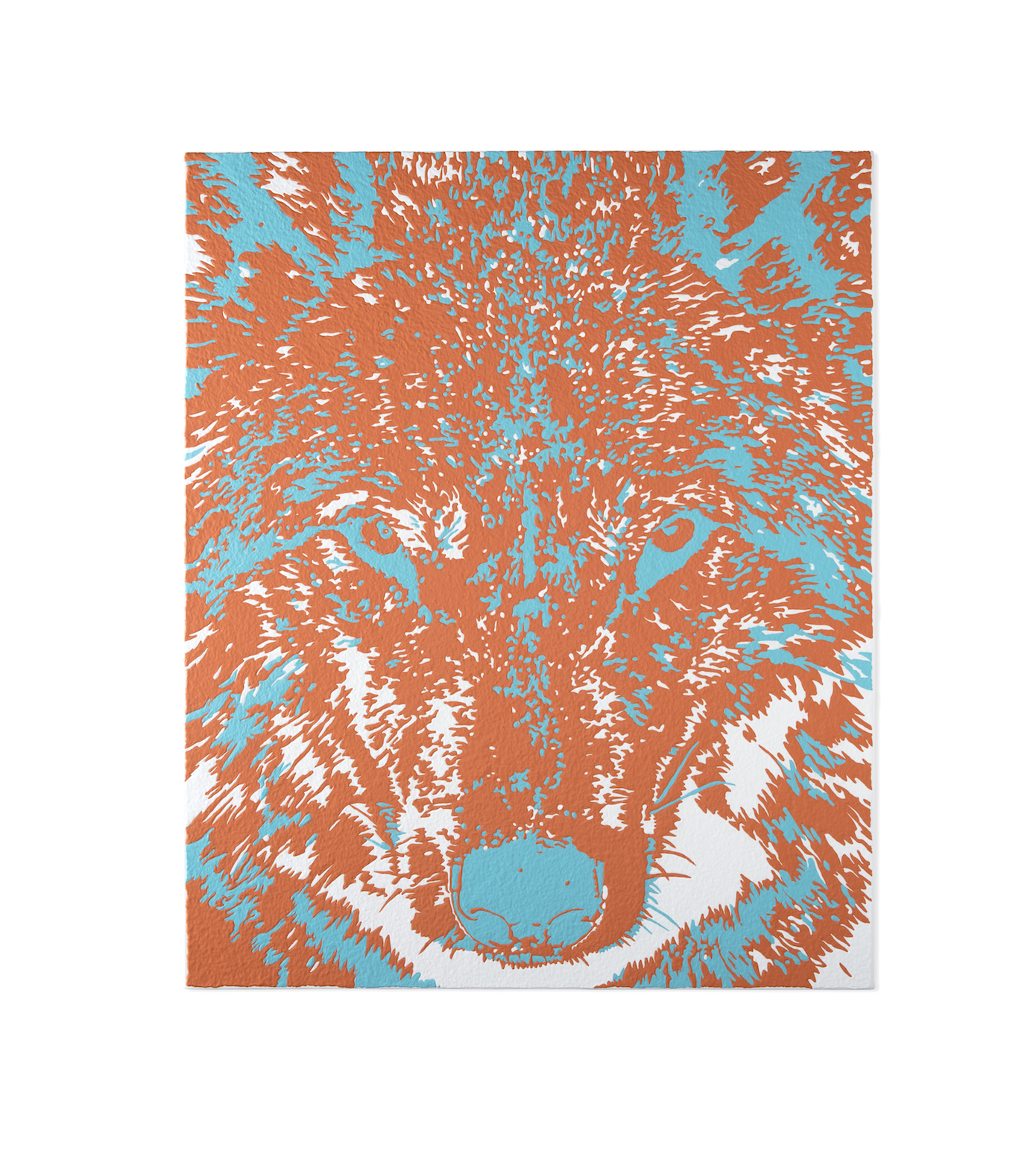“Discernment” - Gray Wolf
Acrylic on Canvas, 30" x 36" x 1.5"
Original Painting: SOLD
Ready-to-Hang, Limited Edition Archival Metal Print: $1,000.00
Time to Completion: 3 Months
Ounces of Paint: 68
Custom sizes and materials available for prints. Inquire here.
Human Impacts Resulting in Protected Status:
Alternative Facts:
The greatest threat to the Gray Wolf is fear, prejudice, and misunderstanding about the species. Many fairy tales and myths represent wolves as dangerous, malevolent, and villainous creatures. These myths are then perpetuated by fear and eventually taken as fact.
Today, Gray Wolf individuals and sometimes entire packs, are targeted because they are thought to kill livestock. It is rare for a wolf to target livestock. Gray Wolves account for less than 1% of livestock losses in the Northern Rocky Mountains. Wolf hunting and trapping are especially common where the Gray Wolf is not protected by the Endangered Species Act and fragmented habitat areas, such as livestock pastures and suburban neighborhoods.
Some hunters believe that they are in competition or hunted by Gray Wolves while in the bush, and will kill them on sight. It is rare that a Gray Wolf would target a “trophy bull”, rather, the Gray Wolf targets weak or diseased deer and elk - nothing a hunter would want. Furthermore, Gray Wolves are very shy and tend to stay away from people. There have been only two fatal wolf attacks on humans in the last 100 years in North America.
Diminishing Protections:
In 2011, Congress tried to revoke Gray Wolf protections under the Endangered Species Act across big swaths of the Northern Rocky Mountains and Great Lakes regions. This could have resulted in thousands of wolves being killed and states establishing aggressive wolf management plans.
The U.S, Fish and Wildlife Service has proposed to remove all Endangered Species Act protections for the Gray Wolf across the United States. This would end wolf reintroduction efforts in areas such as Oregon and Washington.
The Gray Wolf is the only animal to go from a protected status, to unprotected status in a single day under the Endangered Species Act.
Conservation Efforts:
Non-Lethal Deterrents:
Gray Wolf groups have been working with ranchers in developing nonlethal wolf deterrents, such as building barriers, installing alarm devices, and acquiring livestock protection dogs. Reducing attractants, such as bone piles and carcass disposal sites, helps keep the scent of carrion from attracting Gray Wolves. Fencing that is reinforced with electric and colorful fladry is also a great deterrent. Human presence has been one of the best and long standing non-lethal deterrents. These deterrents help to keep human-wolf interactions at a minimum and keep the Gray Wolves from being killed.
Protection & Reintroduction:
Depending on location, the Gray Wolf is either extinct or scarce. Various Gray Wolf groups are lobbying to expand legally protected areas and reintroduction efforts, as well as challenging state wildlife agencies and legislatures on reckless wolf management policies.
Education:
There are many Gray Wolf organizations focusing on educating the public about wolf-pack dynamics, diet, physical characteristics, communication styles, hunting strategies, bringing ecological balance, recovery efforts, and the differences and similarities between wolfdogs, wolves, and regular dogs. These groups also work to dispel the deeply held negative myths surrounding the Gray Wolf by discussing the myths’ origins and why those myths are false.
Profits:
Profits will go to the Wolf Education Project. They work to increase public awareness and understanding of the true nature of wolves and the critical role they play in maintaining ecological balance in their natural habitats. The Wolf Education Project offers on-site or off-site educational opportunities.
Source[s]:
Defenders of Wildlife, 2017
Born Free Foundation, 2017
Oregon Department of Fish and Wildlife, 2017
Wolf Education Project, 2017
